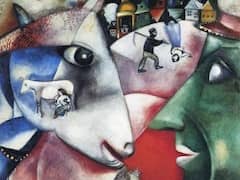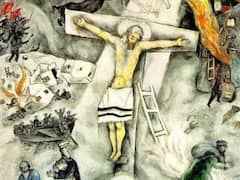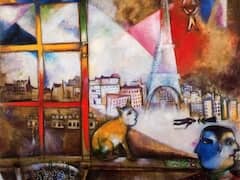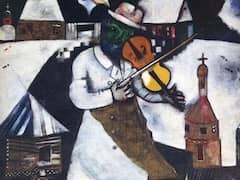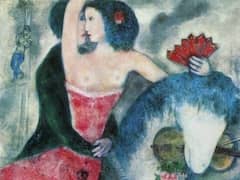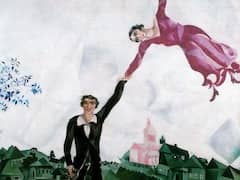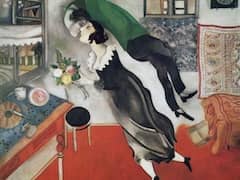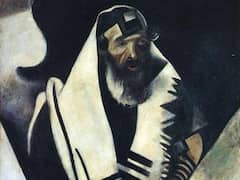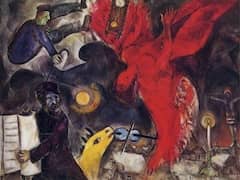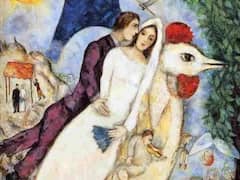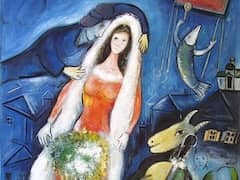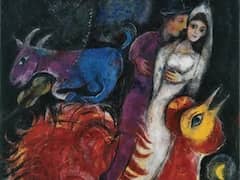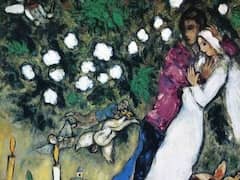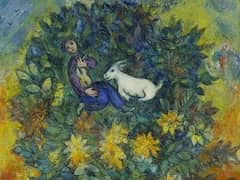The cattle dealer 1912 - by Marc Chagall
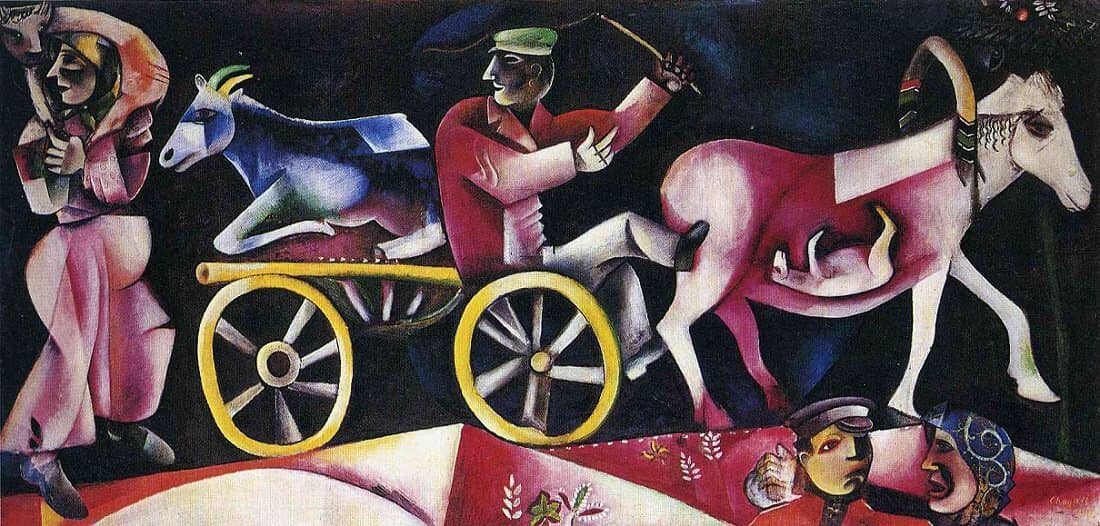
The process of embodying memory in plastic form can be seen in painting The Cattle Dealer. The scene in fact evokes his trips to the cattle market in a horse-drawn cart with his uncle Neuch. But the composition, the scale of the figures and the colour used to construct form give this everyday scene of peasant life a universal significance. It is not in fact the powerful exaltation of the irresistible force of life, always renewing itself, which seems to be evoked here? The clear symbol of the foal seen in the belly of the mare who pulls the cart is explicit in this regard. The unreal red colour of the animal accentuates the symbolic effect. All the figures, and in particular the peasant woman who carries a young calf on her shoulders, are treated monumentally.
In the foreground a young man in a cap and a woman in a shawl embrace each other's shoulders. These two figures are represented half length. They are pivot of the composition and perhaps provide the key to reading it. Placed in the bottom right of the painting, they play a role similar to that of the donor figures to be seen in medieval painting, the role of witness. The scene thus acquire a radiant gravity which is not only the result of its plastic organization and our sensory perception of it. The scene requires above all a cognitive reading, turning the picture into a lesson. In magnifying all forms, animal or human, painting is the sublime metaphor of life. In its function of showing, plainly affirmed here, The Cattle Dealer is akin to the art of the icon.

